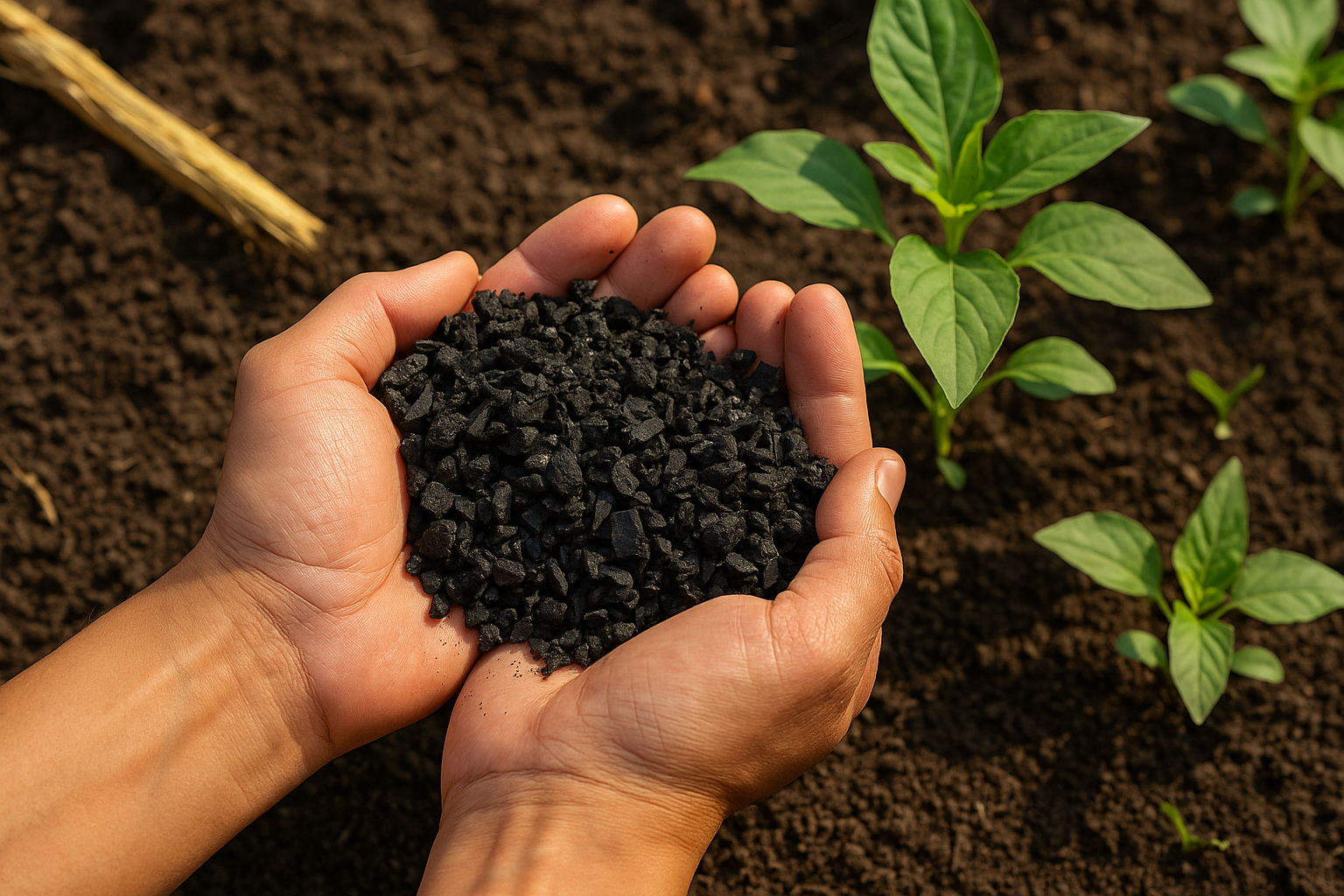While most gardeners are presently familiar with products such as mulch and compost, few have encountered biochar, a material incredibly effective in the enrichment of soil and management of climate change. Wonder how it works? Here’s an explanation of what it is, and how you can make and incorporate its use in your own carbon garden with just a few easy steps!
What is Biochar?
Biochar is a form of charcoal produced by heating organic matter, such as garden waste or agricultural residues, in a low-oxygen environment. This is a process known as pyrolysis (the thermal decomposition of material in the absence of oxygen, which prevents biomass from combusting, and instead converts it into a stable form of carbon).
Its appeal lies in its dual impact on both agriculture and the environment, simultaneously nurturing the land and restoring the climate. The porous nature of biochar increases properties of soil aeration, water retention capacity, and microbial activity, creating an ideal condition for plant growth. Simultaneously, biochar is a carbon sink, sequestering atmospheric CO₂ in a stable form and preventing its return to the atmosphere. Contrasting compost, which eventually decomposes and re-releases some of the carbon it had stored into the environment, biochar locks carbon away in a solid form that can remain in the soil for hundreds to even thousands of years without issue, making it one of the most enduring forms of carbon storage available to gardeners today.
How to Make Biochar at Home
Making biochar doesn’t require expensive industrial equipment, and can be done by any gardener, including you, on a small scale and with simple tools. However, if you don’t have the means to complete any of these steps, biochar can also be easily purchased from Amazon, Home Depot, and more.
- Choose your biomass – Dry plant material like twigs, branches, cornstalks, or pruned clippings work best. Avoid anything treated with chemicals or pressure, or anything painted
- Build a low-oxygen burn – One of the most widely used methods for home-producing biochar is the conepit method. To follow, simply dig a wide, cone-shaped pit in the ground and start a fire at the base of it with small twigs. As the flames take hold, gradually add larger pieces of wood on top until the cone pit is filled.
- Once the top layer starts to turn white with ash, extinguish the fire with water. The limited oxygen in the pit leads to a smokeless, efficient burn, creating biochar.
- ote: Raw biochar can draw nutrients out of the soil if added directly. To avoid this, charge it first through soaking it in compost tea, worm castings, or aged manure for a few days before incorporating it into you garden beds
Research suggests that for every ton of biochar added to soil, up to 3 tons of CO₂ equivalents can be sequestered, making it vital in the effort to reduce climate change, especially when produced from waste that would otherwis release carbon during its decomposition.
As the world urgently seeks climate solutions, biochar offers a rare type of reciprocity: what nourishes your garden also helps heal the planet. Biochar makes it easier for you and your carbon garden to take meaningful climate action, one step and one gardener at a time
Works Cited
- “Biochar : USDA ARS.” www.ars.usda.gov , 31 Jan. 2025.
- Massura, Chad. “How to Make Biochar (3 DIY Methods + an Easier Alternative).” Rosy Soil , 14 Jan. 2014.
- Murray, Marion. “What Is Biochar and How Is It Used?” Extension.usu.edu , Jan. 2021.



